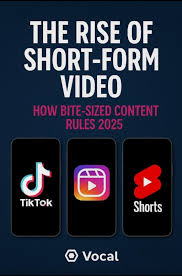TikTok and the Rise of Micro-Influencers: How Short-Form Content is Redefining Digital Marketing in 2025

In 2025, TikTok is not just a platform for dance challenges or viral memes — it has become a powerhouse in digital marketing, reshaping how brands connect with consumers. What’s most interesting is not the mega-celebrities dominating your For You Page (FYP), but the micro-influencers — everyday content creators with niche audiences — who are leading the next wave of marketing disruption.
What Are Micro-Influencers?
Micro-influencers are individuals with 10,000 to 100,000 followers who create highly engaging, niche-focused content. Unlike traditional influencers with millions of followers, micro-influencers maintain high engagement rates and strong trust among their audiences.
“Beat the Pressure: A Comprehensive Guide to Lowering Blood Pressure Naturally.”
Buy book from Gumroad or Paystack
On TikTok, these creators can emerge overnight — thanks to the platform’s algorithm, which rewards creativity and relevance over sheer follower count.
Why TikTok Is the Perfect Breeding Ground
TikTok’s short-form, vertical video format and AI-driven content discovery system allow unknown creators to go viral and grow rapidly. Features like:
- Stitch
- Duet
- CapCut templates
- Native shopping tools
…give micro-influencers the tools to craft bite-sized storytelling that sells. This makes TikTok uniquely suited to nurturing authentic creators whose audiences trust them more than polished ads.
The Shift in Brand Strategy (2023–2025)
Brands in 2025 are moving away from high-cost celebrity endorsements and toward “influencer stacking” — collaborating with hundreds of micro-influencers across TikTok. Here’s why:
| Advantage of Micro-Influencers | Impact |
|---|---|
| Lower cost per campaign | Brands save 50–70% compared to macro deals |
| Higher engagement rate | Average 6–10%, compared to 1–3% for larger creators |
| Targeted niche audiences | Beauty, fashion, tech, wellness, etc. |
| Authentic storytelling | Viewers see real people using real products |
A single viral post from a micro-influencer in skincare or tech can result in thousands of direct sales within 24 hours.
Case Study 1: Beauty Industry Boom
In 2024, a Nigerian micro-influencer named JennyGlow, with 28K followers, posted a 30-second review of a new organic moisturizer using a “before and after” visual trend. That video got 4.2M views and sold out the product across West Africa.
The brand, which had no major advertising budget, recorded a 310% increase in monthly revenue, all driven by TikTok.
Case Study 2: Fashion & Thrift Culture
“ThriftTok,” a subculture on TikTok focused on secondhand fashion, has empowered micro-influencers to showcase affordable style. These creators regularly post “Get Ready With Me” videos, styling thrifted items while tagging small online stores or affiliate links.
Fashion brands now allocate 35–50% of their influencer budget to TikTok micro-campaigns in 2025.
The Role of TikTok Shop & Live Commerce
With the growth of TikTok Shop and Live Selling, micro-influencers are now closing the loop between inspiration and transaction. Followers can:
- Watch a review
- Click a product link in-app
- Purchase instantly — without leaving TikTok
This frictionless process has turned micro-influencers into direct sales agents, making them even more valuable than traditional influencers.
Challenges and Criticism
Despite the advantages, the TikTok micro-influencer economy isn’t without issues:
- Saturation: Too many similar creators can dilute impact.
- Fake engagement: Some influencers use bot tactics to inflate likes/views.
- FTC compliance: Inconsistent use of #ad or #sponsored tags raises transparency concerns.
- Algorithm unpredictability: Viral success is never guaranteed.
Still, these challenges haven’t slowed TikTok’s momentum — they’ve simply pushed creators to be more authentic and strategic.
Looking Ahead: What’s Next in 2026?
- AI tools: Creators using AI for editing, captions, and storyboarding
- Augmented Reality filters: Product try-ons via TikTok filters
- Hyper-local campaigns: Brands targeting regional dialects and culture-specific micro-influencers
- Decentralized influencer networks: Creators owning their communities via blockchain-powered creator tokens
TikTok is evolving into a creative marketplace, and micro-influencers are its rising stars — blending personal storytelling with commercial power in a way no other platform has achieved.
Final Thoughts
TikTok in 2025 is proof that authenticity scales. In a world overwhelmed by polished content and AI-driven manipulation, micro-influencers bring back the trust factor. They’ve become a bridge between communities and commerce, brands and buyers — one 30-second video at a time.
Whether you’re a marketer, a startup, or an aspiring creator, ignoring this shift could mean missing out on the most powerful organic marketing engine of the decade.
💔 “She said she loved me. And for fifty-two years, I believed her.” 💔
Buy The Book "The Longest Lie: A Husband’s Journey Through Love, Betrayal, and Redemption" From Gumroad






